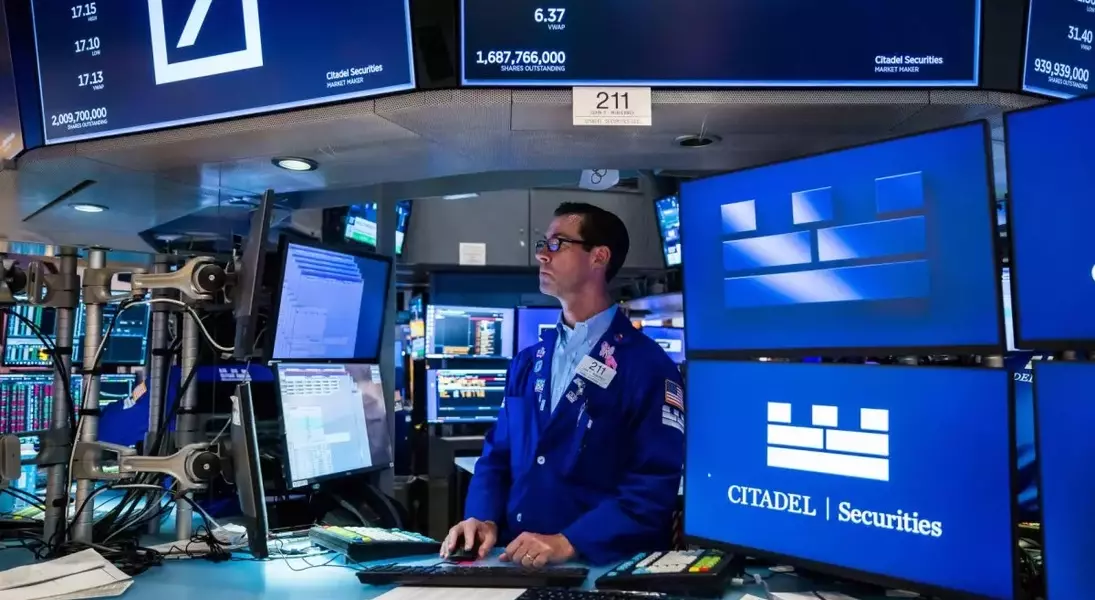Wall Street Resilience: Navigating September's Challenges
As the final trading session of September approaches, U.S. stock futures remain relatively flat, reflecting the resilience of the major averages, which have risen for three consecutive weeks. Despite the historical challenges of September, the markets have managed to maintain their positive momentum, buoyed by the Federal Reserve's interest rate cuts and encouraging economic data.Defying Seasonal Trends: A Remarkable Market Comeback
Steady Start to the Week
Futures tied to the Dow Jones Industrial Average traded near the flatline, while S&P 500 futures added just 0.04% and Nasdaq 100 futures inched up 0.08%. This muted start to the trading session reflects the cautious optimism that has characterized the markets in recent weeks.Closing the Month on a High Note
The 30-stock Dow rose 0.3% on Friday, reaching a new all-time high and ending the week around 0.6% higher. The S&P 500 also gained about 0.6%, while the tech-heavy Nasdaq Composite climbed almost 1% during the week. This strong performance has put Wall Street on track to end September on a positive note, with the Dow and the broad market index up 1.8% and 1.6%, respectively, month-to-date. The Nasdaq has advanced 2.3% in September, defying the historical weakness typically associated with the month.Overcoming Early Challenges
The markets had a rough start to September, which is historically the weakest month for the stock market. However, the rebound in the latter part of the month has been fueled by the Federal Reserve's decision to cut interest rates by a super-sized half point, providing a much-needed boost to investor confidence.Quarterly Gains and Potential Volatility Ahead
The S&P 500 is up 5.1% on the quarter, stretching its year-to-date gain to more than 20%. However, October has a troubling history as well for markets, known as a time of extreme volatility with some of the more notable Wall Street drawdowns occurring during the month. Investors will need to navigate these potential challenges with caution and vigilance.Encouraging Economic Data Supports Optimism
The recent release of August's personal consumption expenditures price index, which came in at just 2.2%, the lowest since February 2021, has made investors more confident about the prospect of further rate cuts from the Federal Reserve. Additionally, initial jobless claims numbers released last week fell less than expected, signaling strength in the labor market.Positive Outlook and Potential Risks
The encouraging economic data "reinforces the core beliefs that prices are stabilizing, the consumer is healthy enough, companies are poised to take advantage of lower rates, and the economy keeps chugging along," said Scott Helfstein, head of investment strategy at Global X. However, investors will need to remain vigilant as they navigate the potential geopolitical noise that could impact the markets in the coming weeks.Upcoming Market Tests
Markets will get a major test later in the week with September's jobs report set to be released on Friday. On the earnings front, Carnival will announce its quarterly results on Monday morning, providing further insight into the state of the consumer discretionary sector.Sector Outperformance and Underperformance
The consumer discretionary sector has emerged as the S&P 500's best-performing sector in September, having climbed 7.3% higher for the month. This outperformance has been driven by the strong gains of companies like Las Vegas Sands, Wynn Resorts, and Tesla. Utilities have also performed well, with a rise of around 6%. In contrast, financials, health care, and energy sectors have all underperformed, posting declines for the month.Navigating the Challenges Ahead
As the markets continue to navigate the challenges of September and look ahead to the potential volatility of October, investors will need to remain vigilant and adaptable. The resilience demonstrated by the major averages in the face of historical headwinds is a testament to the strength and resilience of the U.S. financial markets. With a focus on fundamentals, economic data, and a willingness to adapt to changing conditions, investors can position themselves to capitalize on the opportunities that may arise in the coming months.

